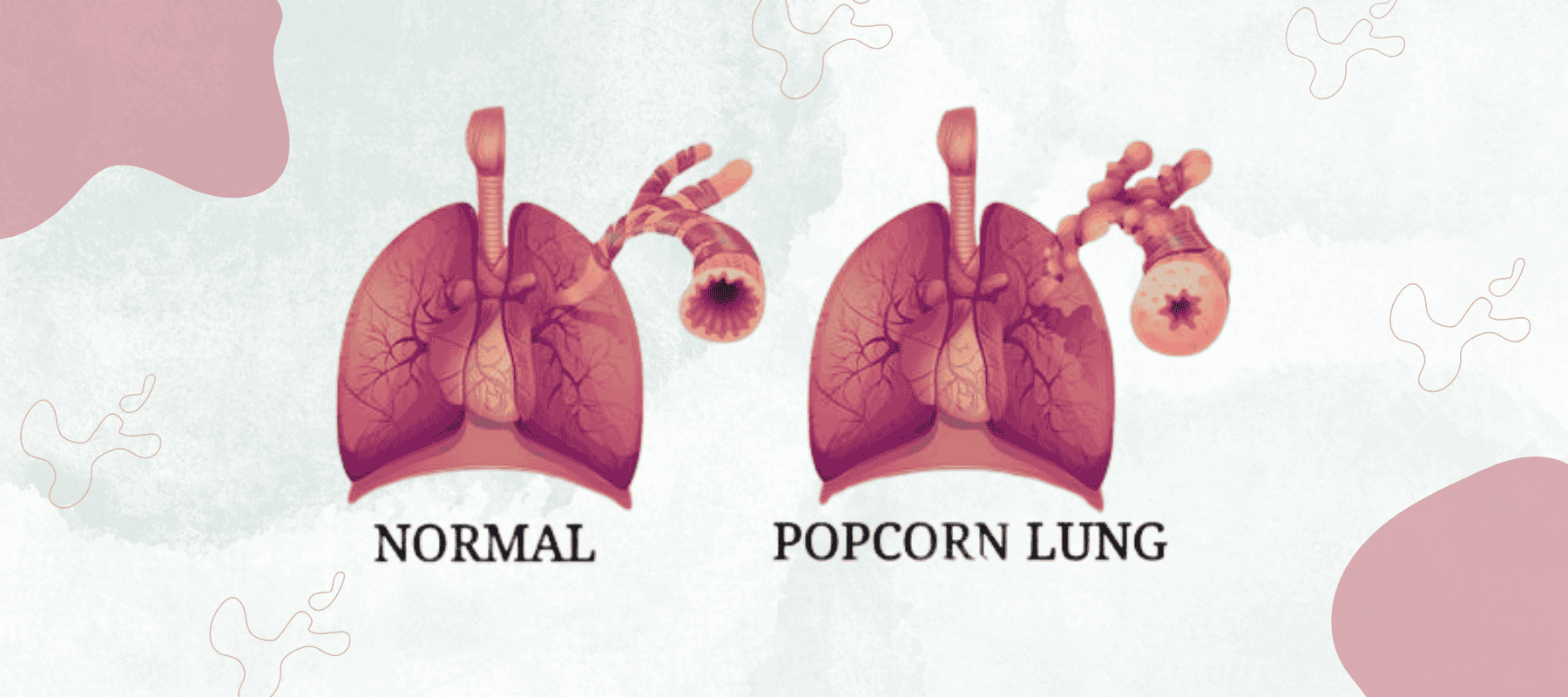Popcorn lung” is the nickname for a rare and serious lung disease called bronchiolitis obliterans. This condition damages the smallest airways in the lungs (bronchioles), causing inflammation and scarring that blocks airflow. The name “popcorn lung” originated after workers at a microwave popcorn factory developed the disease from inhaling diacetyl, a chemical used to create a buttery flavor in popcorn.
Diacetyl, when inhaled, causes damage to the lining of the airways, leading to permanent narrowing and obstruction. Symptoms of popcorn lung include a dry cough, shortness of breath, wheezing, and fatigue. These symptoms often resemble those of asthma or chronic obstructive pulmonary disease (COPD), making diagnosis challenging without specific testing such as lung biopsies or imaging scans.
Vaping has been linked to an increased risk of developing popcorn lung. Many flavored e-cigarettes and vaping liquids were found to contain diacetyl, especially earlier formulations. Though some manufacturers have since removed diacetyl, it is not universally banned in e-liquids and may still be present, particularly in unregulated or black-market products.
When individuals inhale vapor from e-cigarettes that contains diacetyl or similar harmful chemicals, the toxic compounds can reach deep into the lungs, irritating and damaging delicate lung tissue. Repeated exposure increases the risk of chronic lung injury and may lead to bronchiolitis obliterans over time.
Besides diacetyl, vaping also exposes users to other harmful substances such as acetoin, formaldehyde, acrolein, and heavy metals, all of which contribute to inflammation, oxidative stress, and lung tissue damage. While vaping is often marketed as a safer alternative to smoking, it is not without risks, especially for young people or those with preexisting lung conditions.
The relationship between vaping and popcorn lung is still being researched. Although the number of confirmed cases directly linked to vaping is low, the presence of diacetyl in vaping products has raised serious public health concerns. Given the irreversible nature of bronchiolitis obliterans and the growing popularity of vaping among teens and young adults, the potential risk remains significant.
In conclusion, popcorn lung is a debilitating lung disease primarily caused by inhaling harmful chemicals like diacetyl. Vaping, especially flavored products, may contribute to the development of this disease by exposing users to such toxic substances. More regulation and public awareness are crucial to prevent long-term lung damage associated with e-cigarette use.


